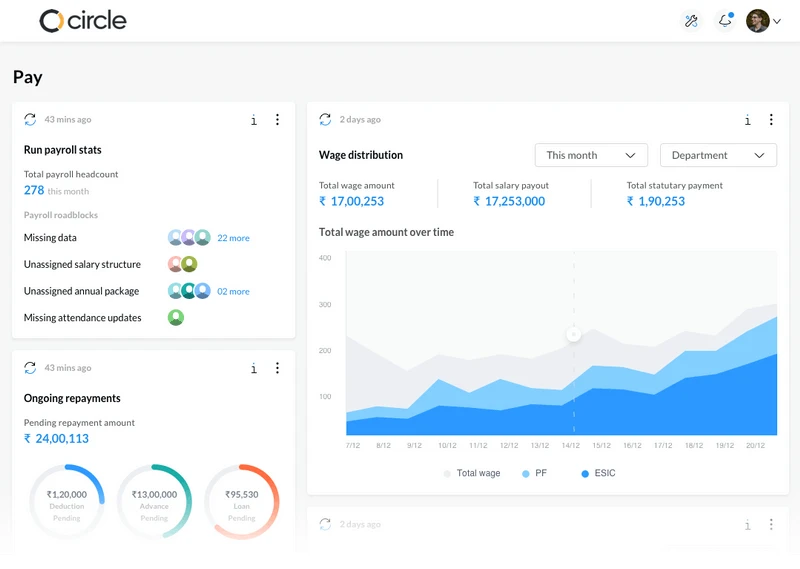Maternity leave is a period of time during which a woman takes a break from work for the birth of a child. Maternity leave in India allows a woman to take time off work when her child is born. Female employees were only allowed 12 weeks of maternity leave under the Maternity Benefit Act of 1961. But the Maternity Benefits Act of 2017 increased the period to 26 weeks. In addition, non-compliance with the laws and regulations carries a penalty for the employers.
It is said that less than 1% of female employees benefit from the Maternity Benefits Act & Amendments. But if you do fall in that 1% category, you should definitely keep reading this post further.
The 26-week paid maternity leave provided by the Indian Maternity Leave Act, 1961 and Amendments made in 2017 has outdone the 16-week leave provided by France and comfortably outperforms Germany and Japan’s 14-week leave. Only the United Kingdom, Greece, Ireland, the Slovak Republic, and the Czech Republic provide lengthier paid time off than India to new moms.
What is Maternity Leave?
Maternity Leave is a well-intentioned initiative by the Indian government for expecting mothers in India. Under the Maternity Leave Act 2017, it defines a period of paid time-offs for female employees during their pregnancy and postpartum (‘Postpartum’ means the time after having a baby). Thus increasing the added benefits to women employees.
This Act further specifies the different categories of maternity leave and entitlements from the employer accessible to women in the commercial and public sectors. This is a ‘fully paid leave’ accessible to a working woman who is pregnant or nursing to provide support for herself and her baby. This amendment in 2017 significantly alters India’s previous Maternity Act 1961 and applies to enterprises, and factories with ten or more employees, whether organized or unorganized.
This allows them to care for the newborn baby while temporarily ceasing to work for the organization. It gives the mother the right to full payment during this period. As a result, maternity leave is a paid leave policy that is based on a set of criteria that women employees must meet in order to be considered valid.
Related topics around Maternity Leave:
Benefits of the Maternity Benefit Amendment Act, 2017
Various rules and rights are effectively incorporated in the legal structure of a business, providing benefits to the workers who work there. So, in a nutshell, these rights are subsidies that make working a long time worthwhile. One of these perks is the Maternity Leave Act of 1961. It protects the interests of working women who would like to start a family while balancing their careers and personal lives.
Essentially, the legislation gives a pregnant woman the time and resources she needs to care for herself and her child’s health. It also broadens the opportunities for surrogate and adoptive mothers. You can get 8 weeks of paid leave prior to childbirth and 18 weeks available after delivery, or you can take them all at once. If you’re fostering or adopting a baby, the limit stays at 12 weeks if you are adopting a baby less than 3 months old.
For companies with 50 or more employees, providing the crèche facilities becomes a requirement, and working from home is also an option. Female workers are entitled to be informed and educated about workplace benefits. When women enter the workplace, the HR or comparable grade representative must offer a copy of such information (benefits) in writing or digitally.
A woman who has a medical termination or miscarriage, late-term abortion or termination of pregnancy has undergone a tubectomy operation, or has any ailment after birth can seek an extension of one month well beyond the authorized maximum period with payment.
However, when it comes to the act’s constraints, women who are pregnant with their first or second child are the only ones who can profit from it. If you are having a third or fourth child, the rule is further restricted by requiring 80 days of continuous service and earning a minimum wage.
a. Work from home option:
The bill contained a provision that allows an employer to allow a new mother to work remotely from home. This would apply if the nature of the employment you are allocated to allows you to work from home. After maternity leave, this arrangement can be used for a period of time that is mutually agreed upon by you and the company.
b. Income option:
Maternity leave is paid in full when you have worked for at least 80 days at an organization in the 12 months leading up to your due date. For the length of your actual absence from work, the maternity benefit is paid at the rate of the average daily wage. A female employee is allowed a healthcare incentive of Rs 3,500 in addition to her 12-week wage. Pregnant women and breastfeeding mothers are eligible for a maternity bonus of at least Rs. 6,000 under the National Food Security Act of 2013.
Who is eligible to get maternity leave?
Under the Maternity Benefits Act of 2017, the eligibility requirements state that you must have worked for at least 80 days in the company in order to be eligible for maternity leave. And you must have completed the indicated 80-day term within the past 12 months. Unfortunately, if you’ve had a miscarriage, your benefits are limited to 6 weeks of recovery leave starting from the day of the loss. A surrogate mother is entitled to 12-week maternity leave.
According to the law, compensation throughout the leave time is determined on the basis of the daily income for the length of actual absence. Originally, the maternity leave in India was just three months long, but after the 2017 Amendment, it was increased to six months. In India, all women working in factories and establishments with at least 10 workers have access to about 6 months of paid maternity leave. However, a mother with two or more children is permitted only 12 weeks of paid maternity leave in India.
ALSO READ: What is Payroll? How get started with payroll software in India. Interested in a free Payroll Software. Get sumHR for Free.
The importance of Maternity Leave in India
Choosing to have a child is a significant and life-changing decision, and it comes with a lot of commitments. The couple’s emotional as well as physiological well-being and resilience are on the line. When both parents work, taking personal responsibility for the children becomes much more difficult.
It is significantly simpler for stay-at-home mums to care for their children. Is that to say that working women aren’t supposed to be there for their children when they need them? Because women are the primary caregivers and nurturers, there are legal provisions for taking time off during childbirth and even after delivery.
Let us first go through the advantages of taking maternity leave:
- Because the woman is not continuing to work, she is better positioned to look after the well being of herself and the baby.
- Another key consideration is how paid maternity sabbatical alleviates any financial strains that may otherwise cause chaos. Pregnancy comes with a slew of fees, including healthcare coverage for the mother for nine months and the newborn after that. It also includes a price list for prenatal care, labour, drugs, immunizations, and postpartum care.
- Paid maternity breaks are extremely beneficial to low-wage workers and single moms.
- In terms of mental health, a comfortable birth and postnatal period lower the chance of postpartum depression for the mother and anxiety in babies.
- By taking the necessary days off, women can recover more quickly, catch up on sleep, and return to work.
- Additionally, women return with renewed vigour and a commitment to giving their all to the organization.
- In particular, the offering of maternal leave immediately aids in staff retention.
- It also helps to close the pay difference between the genders.
Most enterprises are required by Indian law to provide health care benefits to expecting women employees throughout pregnancy and postpartum in order to preserve their rights. This act governs maternity benefits and welfare in India, and it applies to all businesses and organizations with ten or more employees.
How to apply for maternity leave?
Although there is no standard structure, format, or common application process that you must complete. Here are a few things to note when applying for maternity leave to ensure the well-being of both expectant mothers and their newborns:
- Addressing the Application: Begin by addressing your maternity leave application to your manager or the designated person responsible for leave approvals in your office. This ensures that the application reaches the appropriate authority within your organization.
- Compliance: Familiarize yourself with your company’s maternity leave policy. Each organization has its own guidelines and requirements for granting maternity leaves. Make sure you understand the specific procedures and documentation they may require.
- Timely Submission: It’s advisable to submit your maternity leave application well in advance, typically at least two months ahead of your intended leave start date. This allows your employer to make the necessary arrangements and plan for your absence. Clearly state the duration of leave you intend to take and specify that it is to care for your newborn and yourself.
- Essential Information: Include all relevant details in your application, such as the duration of leave requested and the purpose, clearly stating that it is for maternity-related reasons.
- Supporting Documentation: Provide any necessary supporting documentation, such as a medical certificate confirming your pregnancy and expected delivery date. This helps authenticate your request and facilitates the processing of your application.
By following these guidelines, you can ensure a smooth and professional process when applying for maternity leave, while also ensuring that you receive the benefits and entitlements provided under the Maternity Benefit Act.
Standard rules under the Maternity leave act:
According to the statute, an employer should refrain from assigning demanding tasks or imposing long working hours on pregnant employees during the ten weeks preceding childbirth. This rule is in place to protect the health and safety of both the mother and the child.
Additionally, the act places the responsibility on employers to ensure the health and safety of female employees. After delivery or in case of miscarriage, it is mandatory for employers to grant a minimum of six weeks of leave to the employee. During this period, the employee should not be engaged in any work-related activities, allowing ample time for postnatal recovery.
There are serious repercussions if an employer doesn’t comply with the Maternity Benefit Act of 2017. Violations of the act can result in penalties, including a fine of Rs. 5000/- and, in some cases, imprisonment for up to a year. These penalties are imposed to ensure that employers adhere to the law and fulfil their obligations towards pregnant employees.
What should Maternity leave act include in terms of HR?
Creating a comprehensive Maternity Leave Policy is essential for every HR department. Here are some important elements that should be considered:
- Clear Communication: It is crucial for the organization to provide written or email-based communication to pregnant employees, outlining their rights and explaining how to exercise them effectively.
- Compliance with Government Guidelines: HR should ensure that the Maternity Leave policy is regularly updated in accordance with the latest government guidelines and regulations. This ensures alignment with the legal requirements and protects the rights of pregnant employees.
- Exclusion from Performance Appraisal Cycle: It is important to incorporate a provision in the Maternity Leave policy that exempts pregnant employees from the regular performance appraisal cycle. This acknowledges the unique circumstances they are facing and ensures that their evaluation is not adversely affected due to the maternity leave period.
- Work from Home (WFM) Option: Including a clause that allows female employees to work from home during pregnancy can provide flexibility and support their work-life balance. This can be especially beneficial when physical presence at the workplace is not mandatory for their role
Your legal right as en employed pregnant women
An employer cannot fire you when you are on maternity leave or issue a termination notice to you when you are on maternity leave that expires before your leave ends. During maternity leave, an employer cannot modify the terms of employment to your detriment.
Furthermore, unless the discharge or dismissal is for serious misbehaviour, if you are fired or dismissed during her pregnancy, you will be entitled to maternity benefits and a medical bonus.
Challenges faced by the employers
In India, maternity leave/ delivery leave has alleviated a great deal of misery for working women. Employers, on the other hand, have their own number of challenges:
- In India, employers are solely responsible for the expense of maternity leave. In other nations, the government and the employer split the expense
- Providing additional personnel for the pregnant employee who is on maternity leave. The cost of training temporary employees is an additional expense for the business.
- The provision of crèche facilities is an additional infrastructure expenditure for the employer, in addition to the hiring of skilled personnel to run the crèche.
According to the poll, male employees account for the majority of jobs in India. Employers are more hesitant to hire women than males because of the looming and obligatory expenses of employing a female over a male counterpart. As a result, women of marrying age and newly married women will not be seriously considered for important roles and promotions in the organization. Women who have not married yet or who have already had two or more children could have superior work roles and advancement opportunities in the workplace.
SMEs and start-ups operate on a shoestring budget and may be hesitant to hire female staff if the government will not contribute to the cost.
Despite government rules mandating maternity leave policies, some are unable to take advantage of it. The employer is hesitant to cover the entire cost of the female employees out of his or her own pocket. The government should establish arrangements to assist firms in paying some of their expenditures, allowing employers to attract female employees without fear of discrimination.
Conclusion
Pregnancy is a natural phenomenon, and the cognition or working capability of female employees does not diminish at this time. As a developing country that promotes girls’ education, maternity incentives and medical bonuses should be properly explored and adopted by all organizations with full government backing.
Despite the benefits and drawbacks of the existing framework, the legislation assists numerous expecting moms in caring for themselves and their unborn children. Because a woman is under a great deal of stress after giving birth, such perks might help her manage her career and personal life. As a result, the ramifications of such a decision have a long road ahead.
Frequently Asked Questions
What is the duration of maternity leave in India?
According to the Indian Maternity Benefit Act of 1961, the duration of maternity leave for both first and second-time mothers is 6 months or 26 weeks. This provision allows mothers to take an extended period of time off from work to care for their newborns.
Is it possible to extend the 26-week period?
Absolutely! If a woman faces unavoidable health issues during her pregnancy and requires an extension of the maternity leave period, it is possible to prolong it. However, according to the provisions of the Maternity Benefit Act, the woman will need to provide appropriate documentation from a licensed medical professional to the employer for record-keeping purposes. Upon reviewing and verifying the documentation, the employer can approve the extended leave. It’s important to note that the extended period may not be eligible for paid leave since the legislation only allows for remuneration up to the stipulated duration of maternity leave, which is typically 26 weeks.
What happens if I don’t return to work?
According to the Maternity Benefit Act in India, a woman is entitled to avail herself of up to 26 weeks of maternity benefits. However, if the woman decides not to return to work after this period, she can terminate her arrangement or employment. In such cases, she will not be eligible for any further compensation as per the provisions of the act.
Is it possible to get fired because I’m pregnant?
No, absolutely not! The Maternity Benefit Act in India provides strong protection to pregnant women in the workplace. It strictly prohibits employers from terminating the employment contract of a pregnant woman under any circumstances. It is important for working women to be aware of their legal rights and oppose any discriminatory behavior. Employers found guilty of violating these provisions can face severe penalties under the amended Maternity Benefit Act.
What work do limitations apply to pregnant women?
The Maternity Benefit Act in India applies to all female employees, regardless of whether they are employed on a full-time or part-time basis. The act defines a woman employee as “a woman engaged for wages in any establishment, either directly or through an agency.” Maternity benefits are available to female employees who have completed a minimum of 80 days of service in the establishment within the 12 months preceding their expected delivery date. This period includes both the paid maternity leave and any days of layoff.
Which establishments are covered by the Act?
The Maternity Benefit Act in India has nationwide applicability. It covers government establishments, including government employees, as well as factories, mines, plantation industries, and establishments owned by the government. The number of employees in the establishment is not a determining factor. Additionally, the act applies to any shop or establishment where 10 or more persons are employed or were employed on any day in the preceding 12 months, as per the provisions of the act.
What are the maternity leave salary rules?
The maternity benefit in India is calculated based on the member’s average daily salary credit. For normal delivery or miscarriage, it is equivalent to 100 percent of the average daily salary credit multiplied by 60 days. In the case of cesarean section delivery, the benefit extends to 78 days. This ensures that mothers receive financial support during their maternity leave to help cover their expenses.
Can I take maternity leave after joining a new company?
Yes, it is possible to take maternity leave even if you have recently joined a new company. According to the Maternity Benefit Act, a woman employee can apply for maternity leave during her probation period if she meets the following conditions: She should have worked with the employer for a minimum of 80 days in the last 12 months immediately preceding the expected date of delivery.
Is maternity leave paid or unpaid?
Maternity leave is a paid leave.
Is maternity leave 6 or 9 months?
Maternity leave in India is 26 weeks (182 days) which is approximately 6 months.
Will I get full salary during maternity leave?
Yes, you will get the full salary by your organization and it is bound to be paid under the Maternity Benefit Act, 1961.
When to apply for maternity leave?
As for when to apply for maternity leave in India, there is no specific date when a female employee can take maternity leave. However, under the Maternity Benefit Act of 1961, a pregnant woman can choose to go for up to eight weeks’ leave prior to her delivery, and the structure of the leave is left to the convenience of the mother.








